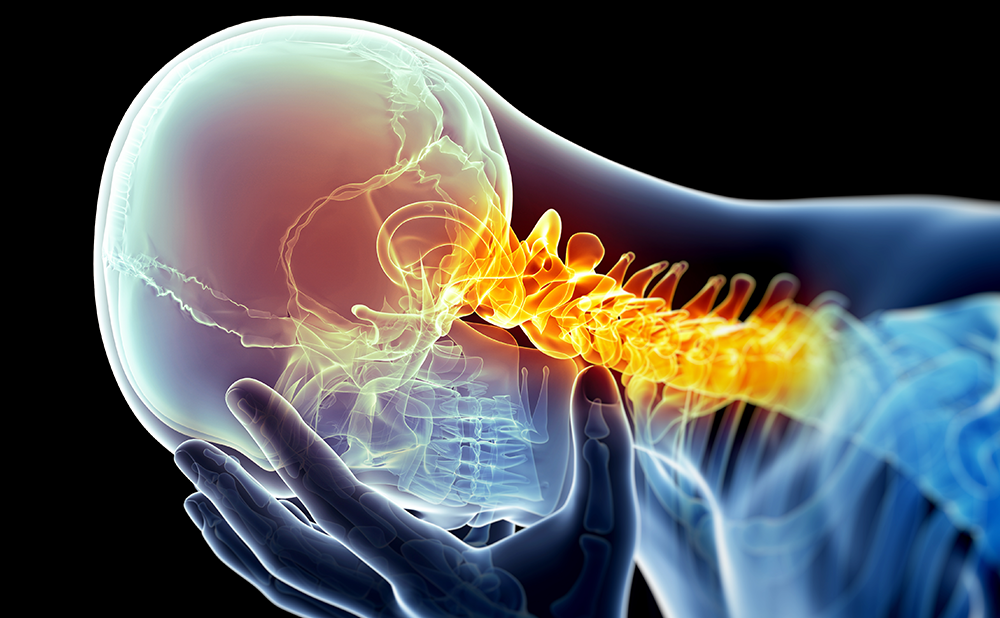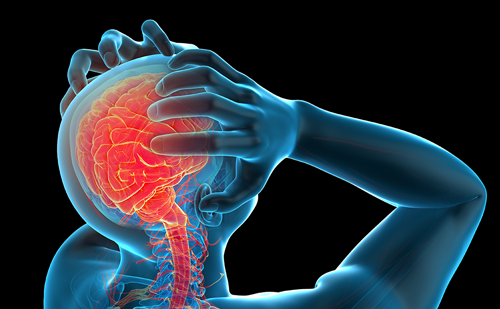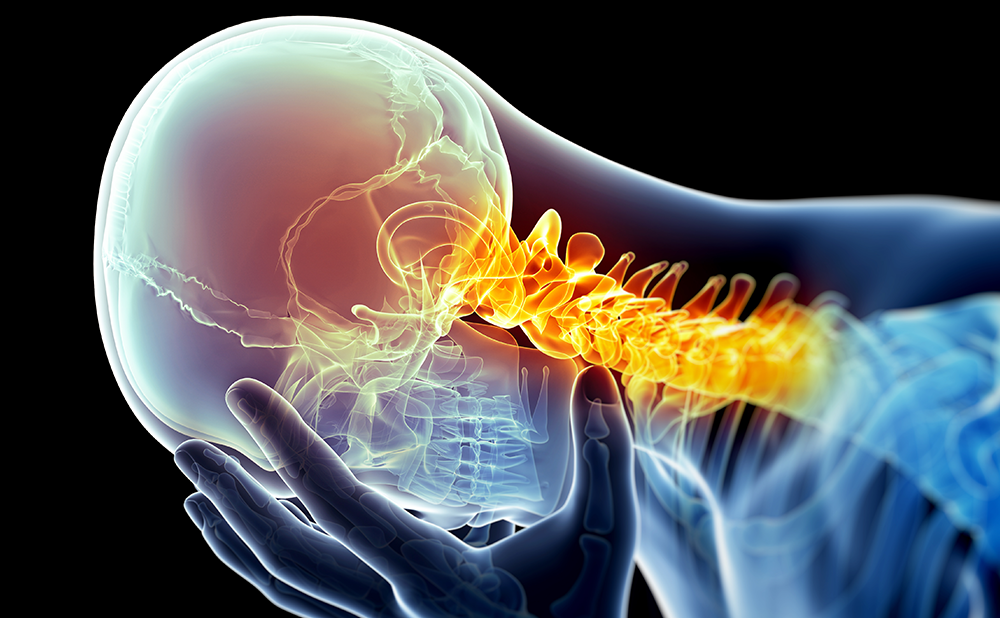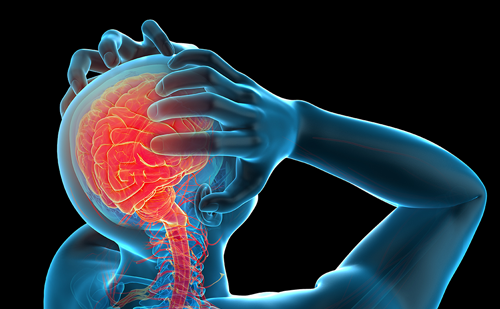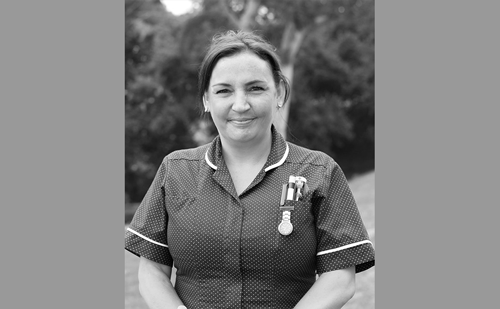Migraine is a common and highly debilitating condition that has substantial social and economic burdens.1–4 The condition affects approximately 12% of people in the US and Europe and is most common in women and those aged 30–50 years.5,6 Migraine treatments offering varying degrees of efficacy and differing modes of action have been widely available for many years.7–10 Yet, a proportion of patients remain dissatisfied with their acute therapies because of slow time to pain relief, limited level of pain relief or unreliable effectiveness11–13 Indeed, several studies have reported that most migraineurs would be willing to try an alternative medication.14,15
A substantial unmet medical need remains for more rapid, potent, and consistently reliable acute migraine treatments. Emphasizing this need, research findings demonstrated that suboptimal outcomes following acute intervention represent a significant risk factor for the development of chronic migraine.16,17 In addition to differences in intrinsic pharmacological activity among the various medications used for acute migraine, the route of administration and the drug delivery method can greatly influence effectiveness and tolerability. Selecting the appropriate method is therefore vital to optimize treatment outcomes.
By virtue of the large area of absorptive mucosa with rich vascularization in the posterior nasal cavity, the nose provides an ideal non-invasive route of drug administration for migraine treatment. Despite these potential advantages for drug delivery, oral tablets remain by far the most commonly utilized route, perhaps underscoring patient preferences and/or limitations of current ‘non-oral’ migraine treatments.
This article discusses the need for rapid pain relief in migraine, limitations of current migraine medications, anatomy of the nasal cavity and its potential advantages as a route for rapid and reliable pain relief in migraine. AVP-825 is an intranasal medication delivery system approved by the US Food and Drug Administration (FDA) in 2016 as ONZETRA™ Xsail™ (sumatriptan nasal powder [Avanir Pharmaceuticals, Aliso Viejo, CA, US]) 11 mg for the acute treatment of migraine with or without aura in adults.18 AVP-825 uses the patient’s own breath to propel sumatriptan powder beyond the nasal valve, into the upper posterior nasal cavity, an area conducive to the rapid systemic absorption of medication, while reducing off-target delivery to the front of the nose or the diversion of the drug to the throat and gastrointestinal (GI) tract. The evidence supporting AVP-825 and its potential importance as a new approach to managing migraine is reviewed herein.
The need for rapid pain relief in acute migraine
Both episodic and chronic migraine are generally under-diagnosed and under-treated; patient management is frequently suboptimal and relies primarily on over-the-counter medications or oral triptans.19–21 In the acute treatment of migraine, patients want medications that provide rapid relief, freedom from pain within 2 hours, relief from other symptoms such as photophobia, phonophobia, and nausea, no recurrence or longer times to recurrence, no need for rescue medication, efficacy that is maintained and does not decrease on subsequent attacks, absence of side effects, and oral administration.13,21,22 In order to achieve these goals, ideal patient management should therefore include disease education, avoidance of potential trigger factors and an individually tailored, evidence-based treatment plan that is reassessed at frequent intervals.22,23
In the acute treatment of migraine, rapid delivery of medication at the optimal dose may improve effectiveness and treatment satisfaction by preventing progression of the migraine cycle. Effective treatment should be available for use early in an attack with back-up medications in case of treatment failure, as the response to any treatment cannot be predicted with certainty.23 Multiple formulations of medication delivery should be part of a treatment plan which stratifies use based on the characteristics of the patient’s migraine attack, while considering the presence of significant nausea or vomiting, the patient’s ability to tolerate odors and flavors during a migraine, speed of headache onset, presence of migraine upon awakening, and severity of pain.24
Fast acting treatments provide the best opportunity to treat during the early stages of an attack when it may be terminated fully. If left untreated, second- and third-order trigeminal neurons may become activated leading to central sensitization and allodynia. Once this occurs, the attack is much harder to treat, and triptans may be less effective.25 Nonetheless, fewer than half of patients using triptans to treat their migraines use them early.26 When comparing patients who employed triptans early from those who delayed treatment, the reasons for delaying treatment were: taking over-the-counter medications or a non-triptan first, waiting to be certain that a headache was a migraine, and only taking a triptan if the over-the-counter or non-triptan medication did not work.26 Other factors contributing to treatment delay included concern of running out of triptans, dislike of taking medications, concern about side effects, and cost. By reducing the duration of pain and the other associated symptoms of migraine (e.g., photophobia, phonophobia, nausea, and vomiting), rapid acting therapies may enable an earlier resumption of work/leisure activities and are likely to improve quality of life.27,28
Triptans and other acute treatments for migraine
The majority of prescriptions for migraine-specific medications are oral triptans. Sumatriptan was the first to emerge and has the most options in terms of formulation. Second generation triptans include naratriptan, zolmitriptan, eletriptan, almotriptan, rizatriptan, and frovatripan.29 Although most patients prefer oral administration of migraine therapy, it is often associated with delayed and unreliable onset of relief due to slow or inconsistent gastric emptying and delayed absorption particularly during a migraine episode. In addition, patients often delay taking oral medications due to migraine-related nausea.30
There are multiple alternative triptan formulations designed to bypass the GI tract with efficacy generally superior to oral administration, but their utilization in current clinical practice has been limited. Local tolerability issues specific to the site of administration, along with the occurrence of triptan-related adverse effects such as tingling, and chest, jaw, or neck tightness (i.e., atypical sensations) may impact tolerability, preference, and adherence despite the potential efficacy advantages of non-oral triptan formulations.
The triptans were first introduced as treatments for migraine over 25 years ago but non-steroidal anti-inflammatory drugs (NSAIDs) remain widely used.24 This is largely due to their availability without a prescription, familiarity, effectiveness in mild attacks, and mostly favorable side effect profiles.31,32 These treatments include acetylsalicylic acid, ibuprofen, diclofenac, metamizole, naproxen sodium, indomethacin, and ketoprofen. NSAIDs are mainly given orally but some can be administered rectally or parenterally in cases that are resistant to treatment or in emergencies. In addition, NSAIDs and/or acetaminophen/paracetamol can be effective and are frequently used in combination with caffeine. NSAIDs appear to be effective for mild to moderate migraine attacks, however, they are associated with a risk for GI adverse effects, including bleeding. High dose levels may be required for NSAIDs to be effective and they are also used in combination with an antiemetic to reduce migraine-associated nausea and vomiting.33 Ergotamines have been used for up to 50 years in migraine treatment and may be useful in patients with intermittent or long-lasting attacks.34 Other treatments include analgesics such as opiates, which are not advised for routine use and are mainly reserved as rescue medication.22,35
In a survey of 688 migraineurs conducted in the US, among 23% who expressed some dissatisfaction with their medication, 87% said pain relief took too long, 84% said treatment effect was inconsistent, and 71% said that the pain recurred.36 In addition, 71% said that pain relief should occur within <30 minutes. In total, 90% of patients prefer the convenience of oral administration over alternative routes. However, the slower onset of effect of oral medications compared with subcutaneous injection or intranasal delivery, along with the challenges associated with the administration of non-oral formulations may contribute to patient dissatisfaction.
Current sumatriptan delivery systems
Sumatriptan is available as oral tablets, subcutaneous injections, liquid intranasal sprays, rectal suppositories (Europe only), and an iontophoretic transdermal patch (the sale and marketing of the iontophoretic transdermal system was suspended on June 10, 2016 pending investigation by the FDA of reports of burning and scarring related to use of the device). A Cochrane review of clinical trials showed that among study participants with migraine, the numbers needed to treat (NNT) to reduce pain from moderate or severe to none or mild by two hours were: subcutaneous injection: 2.3 (6 mg, n=2,738), oral: 3.5 (100 mg, n=7,811), intranasal liquid: 3.5 (20 mg, n=2,020), and rectal: 2.4 (25 mg, n=240).37 The transdermal patch, which was not included in the Cochrane review, showed an NNT of 4.1 (n=454) based on data from a Phase III pivotal trial.38 In this review subcutaneous administration was apparently the most effective and

fastest route, but it is less convenient than oral or nasal administration and is associated with more adverse events and higher costs.37 Whilst these NNTs provided interesting comparisons between administration routes, their clinical meaningfulness remains unclear.
The benefits of non-oral migraine therapies
Delivery of triptans via non-oral routes avoids issues involving GI absorption and hepatic first-pass metabolism, both of which can delay the onset of effect and diminish the efficacy of orally administered medications in migraine.39 These attributes are particularly important for patients with a rapid onset of migraine pain, migraine present upon awakening, or significant nausea or vomiting during attacks. Injection or intranasal delivery may improve bioavailability, reduce loss of drug due to metabolism, and decrease the risk of GI adverse events. While bioavailability of the subcutaneous injection is high, the bioavailability of treatments delivered intranasally by traditional liquid spray is reduced because a portion of the medication settles on the floor of the anterior nasal cavity and travels to the back of the throat, where it is swallowed. Medication that is diverted to the GI tract is subject to the same shortcomings of traditional oral delivery such as slower absorption and lower systemic bioavailability.40
Nasal anatomy and migraine treatment administration
When considering nasal delivery devices and mechanisms, it is important to keep in mind that the main purpose of the nasal airway is to protect the lungs from hazardous exposures. To take full advantage of the nasal passage as a delivery route for drugs, several features of nasal anatomy, physiology, and aerodynamics must be taken into account to ensure rapid and efficient drug delivery. The nasal valve and the complex tortuous nasal geometry are among the most important hurdles for efficient nasal drug delivery into the systemic circulation (Figure 1).41,42 The nasal valve region is the narrowest point in the entire respiratory tract and is located about 2 cm into the nose, at roughly the location separating the anterior from the

posterior nasal cavity. The anterior portion of the nasal cavity is a small region lined with squamous epithelium designed to protect the body from inhaled particles and toxic substances, properties which are not ideal for efficient drug delivery. The posterior nasal cavity, located beyond the narrow nasal valve, has a large surface area lined with columnar respiratory epithelium that is richly supplied from a vascular bed of highly permeable capillaries, allowing for rapid absorption of drug directly into the circulation.42 In order to achieve optimal uptake and optimal pharmacodynamics, medications must efficiently and reliably be deposited in the posterior nasal cavity beyond the nasal valve.41
Because the posterior nasal cavity is difficult to reach, it is under-used as a site of drug administration.39,43–45 Liquid nasal sprays often fail to fully penetrate beyond the nasal valve, as inhalation tends to create negative pressure within the nasal cavity and narrow the nasal valve passage. Because the anterior nasal cavity is small and lined with squamous epithelium, depositing liquid medication here reduces the potential for rapid systemic absorption.43,46 This is supported by a study in healthy volunteers in which only 29% of total exposure to zolmitriptan delivered by liquid nasal spray was from nasal absorption; therefore up to 71% was swallowed and ultimately absorbed in the GI tract.47 In addition, liquid medication deposited in the anterior portion of the nose tends to settle on the nasal cavity floor and a substantial portion travels to the back of the throat, often resulting in complaints of an unpleasant or bitter taste which may further perpetuate nausea or vomiting during a migraine attack. An ideal intranasal product, particularly for the migraineur, would minimize drug deposition in the anterior nasal cavity and maximize the amount delivered beyond the nasal valve in order to reach the large absorptive mucosal surfaces of the posterior nasal cavity.
AVP-825—a breath-powered delivery system for sumatriptan nasal powder
AVP-825 is an intranasal medication delivery system containing 11 mg sumatriptan powder per nosepiece, with two nosepieces comprising

a single 22 mg dose (~ 15–16mg sumatriptan delivered intranasally) (Figure 2).18,48,49 When inserted properly into one nostril, the sealing coneshaped nosepiece of the exhaler makes a tight seal and expands the narrow opening of the nasal valve. After pressing a button to pierce the sumatriptan containing capsule, the patient blows into the opening of mouthpiece for 2-3 seconds to create a positive pressure differential in the oral cavity. This raises the oropharyngeal velum (soft palate), which separates the oral and nasal cavities, helping to prevent lung deposition and limiting diversion of drug into the GI tract. After passing through the nosepiece of the device, the exhaled breath carries the sumatriptan powder deep into the nasal cavity where it is deposited on the mucosal surface of the posterior nasal cavity. Breathing into the device balances pressure across the soft palate to assure an open connection between the two sides of the nasal cavity, as the breath continues around the septum and out of the other nostril (Figure 3). Sumatriptan powder delivered this way is more efficient and produces earlier exposure and faster absorption with a lower dose than either liquid nasal spray or oral administration.50
Clinical trials supporting the use of AVP-825 in migraine
AVP-825 has been studied in a series of randomized Phase I, II, and III studies (total n=642), which were either placebo-controlled or comparative in design (Table 1). In these clinical trials, all subjects were trained on the use of the device prior to treatment, and study results demonstrate that users of AVP-825 can complete proper dose administration with and without formal training. All subjects in clinical trials were able to demonstrate the ability to use the breath powered delivery device correctly, and presence of moderate nasal congestion (e.g. due to common cold or allergic rhinitis) was not a reason for exclusion in the clinical trials. Those with an uncontrolled nasopharyngeal illness or known nasal obstruction due to nasal septum deviation, polyposis or severe mucosal swelling were excluded.

In an early randomized open label, cross-over, pharmacokinetic (PK) Phase I study (n=20), healthy subjects received four sequential single doses of sumatriptan with 7-day wash-out intervals between treatments consisting of AVP-825 (containing 22 mg intranasal sumatriptan powder), 20 mg sumatriptan liquid nasal spray, 100-mg sumatriptan oral tablet, and 6 mg sumatriptan subcutaneous injection.50 The results showed that AVP-825 was a more efficient method of sumatriptan delivery, producing a higher peak plasma concentration (Cmax) and a faster rise in plasma concentration (tmax) with a lower delivered dose (16 mg) than nasal spray and faster absorption than either nasal spray or oral administration. AVP- 825 increases sumatriptan bioavailability by 27% compared to oral tablets, and by 36% compared to liquid nasal spray administration.
The absorption of sumatriptan into the bloodstream (10-15 minute area under the curve) and the plasma drug concentration profiles indicated that AVP-825 produced greater sumatriptan blood concentrations than nasal spray or oral tablets over the first 15 minutes after dosing (Figure 4),50 despite a lower delivered dose, and a significantly lower peak and total systemic exposure than oral tablet or subcutaneous injection.
In a randomized, double-blind, placebo-controlled, Phase II study, participants with episodic migraine (n=117) were treated with AVP-825 (either 11 mg or 22 mg sumatriptan) or placebo during a single migraine attack of moderate to severe intensity.51 The results showed that AVP- 825 provided a significantly greater rate of pain freedom (54% and 57% for 11 mg or 22 mg, respectively versus 25% for placebo, p<0.05 for both comparisons) and pain relief (84% and 80% for 11 mg or 22 mg respectively versus 44% for placebo, p<0.001 and p<0.01, respectively) at 2 hours after dosing compared with placebo.52 In this study, AVP-825 doses were well tolerated and treatment-related adverse events were generally mild and transient.
The Phase III TARGET study (for definition of study names see Table 1)53 was a randomized, double-blind, placebo-controlled, parallel group single attack study (n=230) in which participants with migraine headaches of moderate or severe intensity were treated using AVP-825 (22 mg) or a matching placebo delivery system containing lactose powder.51 Significantly more patients receiving AVP-825 versus placebo reached the primary outcome of headache relief, defined as a change in pain severity from severe or moderate to mild or none at 120 minutes post-dose (68%


versus 45%, p=0.002), with statistical significance demonstrated at every time point from 30 minutes (42% versus 27%, p=0.03) through 2 hours (Figure 5). AVP-825 was well tolerated and associated with few systemic adverse events. Local adverse events that were reported more frequently following treatment with AVP-825 versus placebo, respectively, were local site reactions including abnormal taste (22% versus 4%), nasal discomfort (13% versus 2%), rhinorrhea (5% versus 3%), and rhinitis (3% versus 0%), with the majority of each of these events described as mild. In addition, nearly 90% of subjects in the TARGET study reported that the delivery system was easy to use.
The Phase III COMPASS study was a randomized, double-blind, multi-attack, double-dummy, head-to-head, crossover study (n=275)

(Figure 6).53 Patients with 2–8 migraines/month were randomized (1:1) to either AVP-825 (22 mg) + oral placebo tablet or an identical placebo delivery system containing lactose powder + 100 mg oral sumatriptan tablet for up to a 12-week duration after which treatments were crossed-over for a second 12-week treatment period. Patients were instructed to treat ≤5 attacks within one hour of onset in each treatment period. A total of 185 (67.3%) participants treated at least one migraine in both periods and were analyzed for efficacy; a total of 1,531 migraines were assessed (765 AVP-825, 766 oral sumatriptan). Participants receiving treatment with AVP-825 + placebo tablet experienced significantly greater reduction in migraine summed pain intensity difference in the first 30 minutes after dosing (SPID-30) compared with participants receiving high-dose oral sumatriptan tablet + placebo device (p<0.001).53 Significantly greater rates of both pain freedom and pain relief were observed with AVP-825 versus oral sumatriptan as early as 15 minutes and at every time point through 90 minutes post-dose. After 2 hours, the rates of pain relief and pain freedom were similar for both treatments and remained so for up to 48 hours (Figure 7A and 7B). Significantly more attacks treated with AVP-825 produced early reductions in migraineassociated symptoms (photophobia, phonophobia and nausea), as well as early improvement in clinical disability and meaningful relief after using AVP-825 versus oral sumatriptan. The majority of participants in this study treated multiple attacks and demonstrated significantly greater consistency across multiple migraines with AVP-825 versus oral sumatriptan. At no time point and for no efficacy endpoint were the statistical comparisons in favor of oral sumatriptan.

Treatment with AVP-825 was well tolerated with no serious adverse events and a safety profile similar to that reported in other controlled trials. The most frequent adverse events for AVP-825 and sumatriptan (100 mg) were abnormal taste (26% versus 4% respectively) and nasal discomfort (16% versus 1%, respectively), of which approximately 90% were mild. In addition, there was a lower incidence of triptan-related atypical

sensations after dosing with AVP-825 versus 100 mg oral sumatriptan (2% versus 5%; p=0.02). The greater efficacy over the first 90 minutes and the similar efficacy over 2–48 hours were achieved despite the fact that AVP-825 delivers a substantially smaller systemic exposure to the drug than the 100 mg sumatriptan tablet.
Evidence supporting AVP-825 in migraine from additional analyses of the TARGET and COMPASS study data Additional/post-hoc analyses of prospectively collected outcomes from the TARGET and COMPASS studies based on patient subgroups and several secondary endpoints have produced further insights into the value of AVP-825 in the treatment of migraine. These are summarized in Table 2.
In the TARGET study, a secondary outcome analysis showed that pain-freedom at 2 hours was achieved by significantly more participants using of AVP-825 than with placebo (34% versus 17%, p=0.008). In addition, significantly more enrollees treated with AVP-825 reported sustained pain relief, defined as pain relief within 120 minutes and no use of rescue medication or relapse within 24 and 48 hours post-dose, compared with placebo.
Additional analysis of the TARGET study data showed that significantly more participants receiving treatment with AVP-825 versus placebo reported meaningful relief at 120 minutes post-dose (70% versus 45%, p<0.001), and no disability at 120 minutes post dose (42% versus 27%) (Table 2).54 In addition, treatment with the AVP-825 effectively reduced headache severity in participants with either moderate or severe migraine compared with placebo, with greater improvement observed in participants who treated headaches of more severe intensity at baseline.55
A further TARGET study analysis explored the efficacy of AVP-825 relative to placebo based on history of previous treatment with triptans prior to enrollment in the study. Statistically significant separation from placebo was achieved as early as 30 minutes (47.1% versus 23.1%, p<0.05) and at all time points through 120 minutes (61.8% versus 35.0%, p<0.05) in patients who had previously used at least two triptans. Significant separation was also seen from 60 minutes (57.5% versus 40.6, p<0.05) through 120 minutes (70.3% versus 51.6%, p<0.05) for those who had previously used one or no triptans. The probability of being a responder to placebo tended to be greater in the ≤1 triptan subgroup than in the ≥2 triptan subgroup, which drove the differences in statistical separation at earlier time points. Analysis of the difference in response to AVP-825 treatment based on number of prior triptans used was not statistically significant for pain relief, suggesting that response to treatment with AVP- 825 was consistent and not influenced by number of prior triptans used.56
In the COMPASS study, most subjects treated 2–5 migraines in a treatment period (95% AVP-825, 92% oral sumatriptan), and treatment outcomes with AVP-825 were more consistent across multiple migraine attacks compared with 100 mg oral sumatriptan in participants who treated ≥2 attacks (n=165), and in participants who treated ≥3 attacks in each period (n=140).57
A pooled analysis of the data from all of the placebo-controlled Phase II and III studies (Table 2) of AVP-825 examined outcomes of pain relief, pain freedom, clinical disability, migraine-associated symptoms, meaningful relief, use rescue medication and safety profile.58 The analysis confirmed the individual study findings demonstrating that AVP-825 is generally well tolerated and confers rapid early efficacy that is sustained through 48 hours.
Discussion and conclusion
Migraine is a highly debilitating disease that continues to exert heavy social and economic burdens. Triptan therapies have improved treatment effectiveness and extended therapeutic choices but more rapid relief of migraine pain remains a significant unmet medical need. This is emphasized by the finding that most patients would be willing to try another medication for acute treatment of their headaches.15 A potential weakness of oral delivery of migraine medications is the delayed or inconsistent onset of relief due to slow or erratic GI absorption especially when most needed – during a migraine attack. Migraine-related nausea predicts a poor response to oral triptans and can also cause patients to delay oral treatment, further compromising therapeutic efficacy.30
AVP-825 is a novel treatment that takes advantage of nasal anatomy and physiology to provide an efficient method of drug delivery. AVP-825 uses the patient’s own breath to propel low dose sumatriptan powder into the upper posterior nasal cavity, an area potentially conducive to the rapid absorption of medication into the systemic circulation. The unique shape of the nosepiece in conjunction with the air pressure from exhalation helps to widen the nasal valve allowing for targeted delivery to the posterior nasal cavity, and closure of the soft palate may help prevent lung deposition and limits diversion of drug into the GI tract.
The primary findings of prospective, randomized, placebo-controlled studies, demonstrated that AVP-825 provided early onset of efficacy for migraine without loss of sustained efficacy over multiple attacks, and was associated with a low risk of systemic triptan-related adverse events. The meaningfulness of the treatment effect was emphasized by the post-hoc analyses and secondary endpoints. In a blinded comparative study across multiple attacks, AVP-825 provided an earlier reduction of migraine pain intensity and higher rates of pain relief and pain freedom from 15 through 90 minutes, without loss of sustained efficacy despite a lower peak and systemic exposure than the most effective dose of oral sumatriptan (100 mg). AVP-825 was well tolerated, with an overall tolerability profile similar among the Phase II and III studies. Most treatment emergent adverse events were associated with local administration site effects such as nasal discomfort and abnormal product taste, with the majority of cases reported as mild.
Future research on AVP-825 is needed to confirm long-term efficacy and determine how other patient outcomes, including migraine-related disability and migraine-associated symptoms such as nausea, change over time as a function of treatment. AVP-825 is indicated only for the acute treatment of migraine with or without aura in adults, and further studies would be needed to determine if intranasal treatment might benefit patients with cluster headache and migraine disorders other than episodic migraine, as well as other populations (e.g., adolescents). The extensive available trial data and additional analyses show that AVP-825 has the potential to improve the treatment of acute migraine, having rapid onset of therapeutic effect across multiple attacks, less systemic drug exposure, and low rates of triptan-related adverse events.


